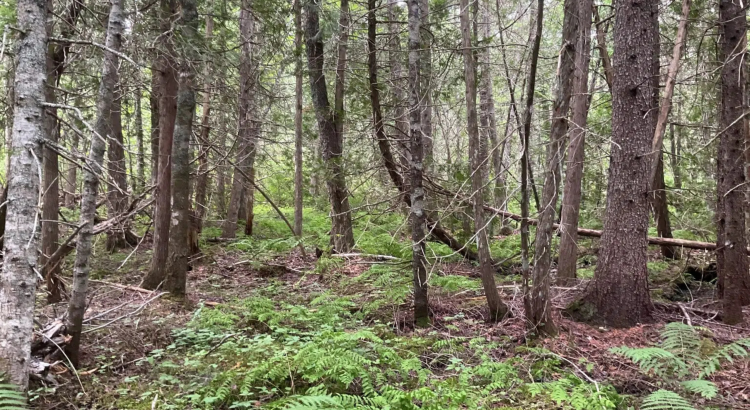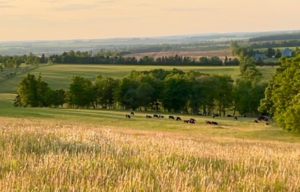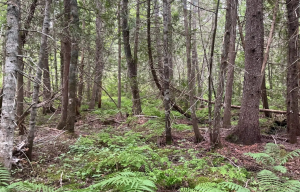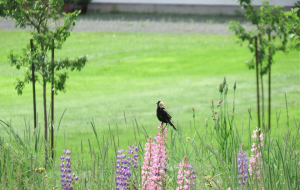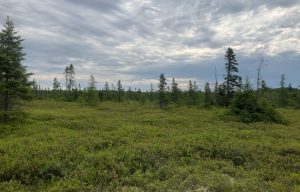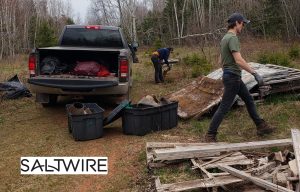Prince Edward Island is a mosaic of small, privately owned parcels, with high road density and a history of deforestation for farmland. These factors have created fragmented habitat for wildlife in the remaining forest and wetlands, which has increased the occurrence and severity of “edge effects”.
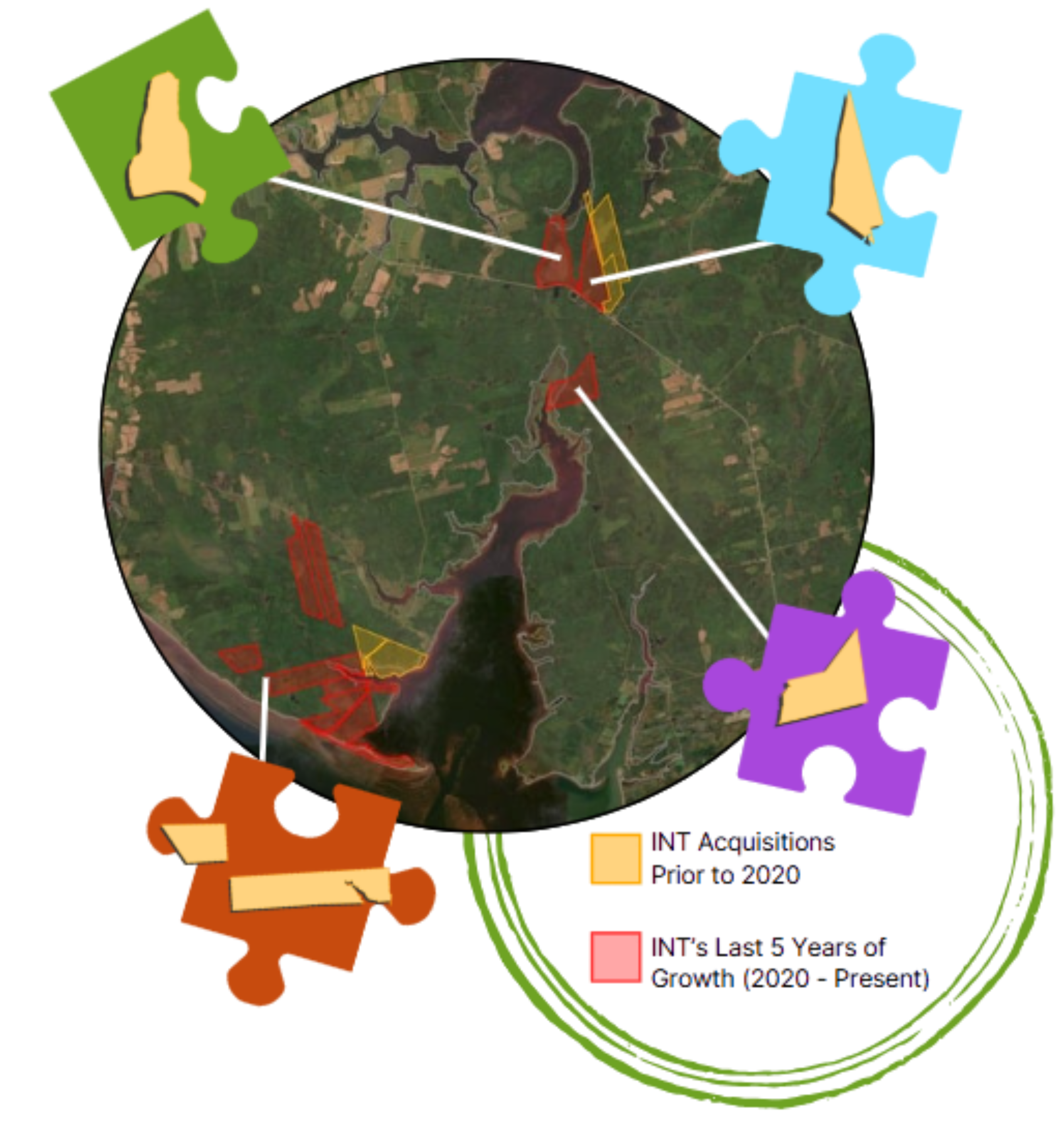
Edge effects occur on the boundary of an ecosystem and can negatively impact wildlife and ecological processes through exposure to outside stressors including wind, temperature variance, water pollution, and noise. These stressors can make wildlife more susceptible to disease, pests, and increased predation, depending on the species.
Extensive habitat fragmentation has also created many “pinch points” across PEI. These are corridors where wildlife is funneled between habitats. Further habitat loss in these regions can reduce species travel significantly.
One of INT’s core goals is to reduce future fragmentation by protecting large, connected areas
of wildlife habitat. This also protects “interior forests”, which are generally characterized as 200 meters into a forest, where edge effects no longer significantly impact the ecosystem. Protected interior forests are rare on PEI, and provide critical habitat for species such as the provincially rare eastern hemlock and the federally at-risk olive-sided flycatcher.
Connectivity Highlight
Since 2020, INT has acquired over 1,450 acres within one of Prince County’s largest contiguous forest blocks in Alaska and one of PEI’s most natural prominent pinch points in Portage, shown below.
Corridors of Connectivity 5 Years of Growth
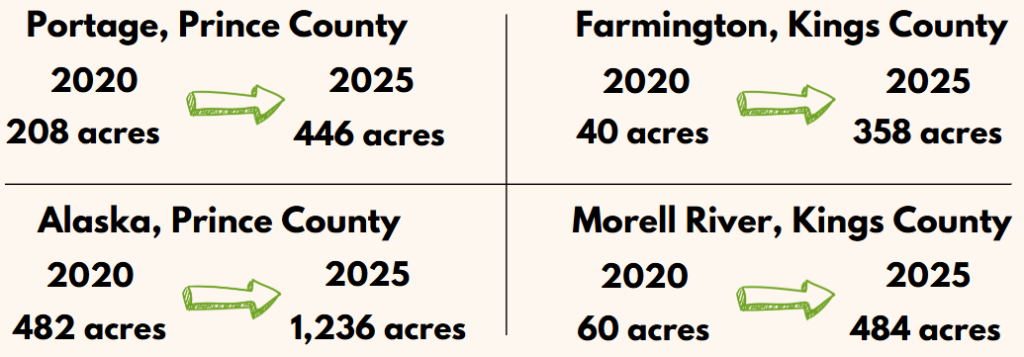
In recent years, INT has made significant strides in acquiring large parcels and building onto existing Natural Areas. These regions are home to ecologically significant features, including interior forests and federally at-risk and provincially rare species. INT also prioritizes protecting land within pinch points, promoting free travel of wildlife within fragmented landscapes.

To learn more about donating or selling your land to INT, click the button below.
Latest Articles
- Seeing the Importance of Forest Features on Agricultural LandsDuring the 2025 field season, thanks to Forested Landscape Priority Place (FLPP) funding, Island Nature Trust was able to look at the importance of forested features on agricultural lands, specifically in terms of our local avian… Read more: Seeing the Importance of Forest Features on Agricultural Lands
- McNeill Family Donates Land to Honor Parents and Their Family LegacyThe McNeill family of Days Corner, PE, has made a generous 80 acre donation of land on the Ellis River. This property, which lies just outside of Wellington, is an ecological hotspot, with over a kilometer… Read more: McNeill Family Donates Land to Honor Parents and Their Family Legacy
- The Importance of ConnectivityPrince Edward Island is a mosaic of small, privately owned parcels, with high road density and a history of deforestation for farmland. These factors have created fragmented habitat for wildlife in the remaining forest and wetlands,… Read more: The Importance of Connectivity
- Local Farmers Committed to Bobolink ConservationThe partnership between ALUS and Island Nature Trust has been one that has created a wonderful foundation for farmland bird conservation across Prince Edward Island. Local farmers are proving their commitment to wildlife by providing nesting… Read more: Local Farmers Committed to Bobolink Conservation
- Remembering John SylvesterThe Staff and Board of Island Nature Trust wish to extend their condolences to the family of John Sylvester, a gifted photographer who captured the beauty of our Island’s ecosystems. John was an ardent supporter of… Read more: Remembering John Sylvester
- Portage Bog Natural Area ExpansionIsland Nature Trust is thrilled to announce the purchase and protection of 240 acres (97 hectares) of ecologically significant bog, salt marsh, and lowland forest that stretches from the Western Road to the Portage River in… Read more: Portage Bog Natural Area Expansion
- Survivor for a Cause: How PEI’s Fraser McCallum Used Reality TV to Raise Awareness for Island Nature TrustIn a world of reality TV where backstabbing and strategizing often take center stage, one Islander is using his love for Survivor to make a real difference in conservation. Fraser McCallum, a Parks Canada employee and… Read more: Survivor for a Cause: How PEI’s Fraser McCallum Used Reality TV to Raise Awareness for Island Nature Trust
- Let’s Give a Hoot About Nature This WinterBirds, like this barred owl make their home in our Island’s forests and wetlands and are signs of healthy ecosystems. While you might not see them, you may hear them with their distinctive call that sounds… Read more: Let’s Give a Hoot About Nature This Winter
- Media Spotlight: INT’s Essential Role in Protecting Natural AreasAt Island Nature Trust, we are committed to safeguarding the natural beauty of Prince Edward Island. This summer, our stewardship team collected approximately 1,500 pounds of illegally dumped waste across our properties. From household appliances to… Read more: Media Spotlight: INT’s Essential Role in Protecting Natural Areas
